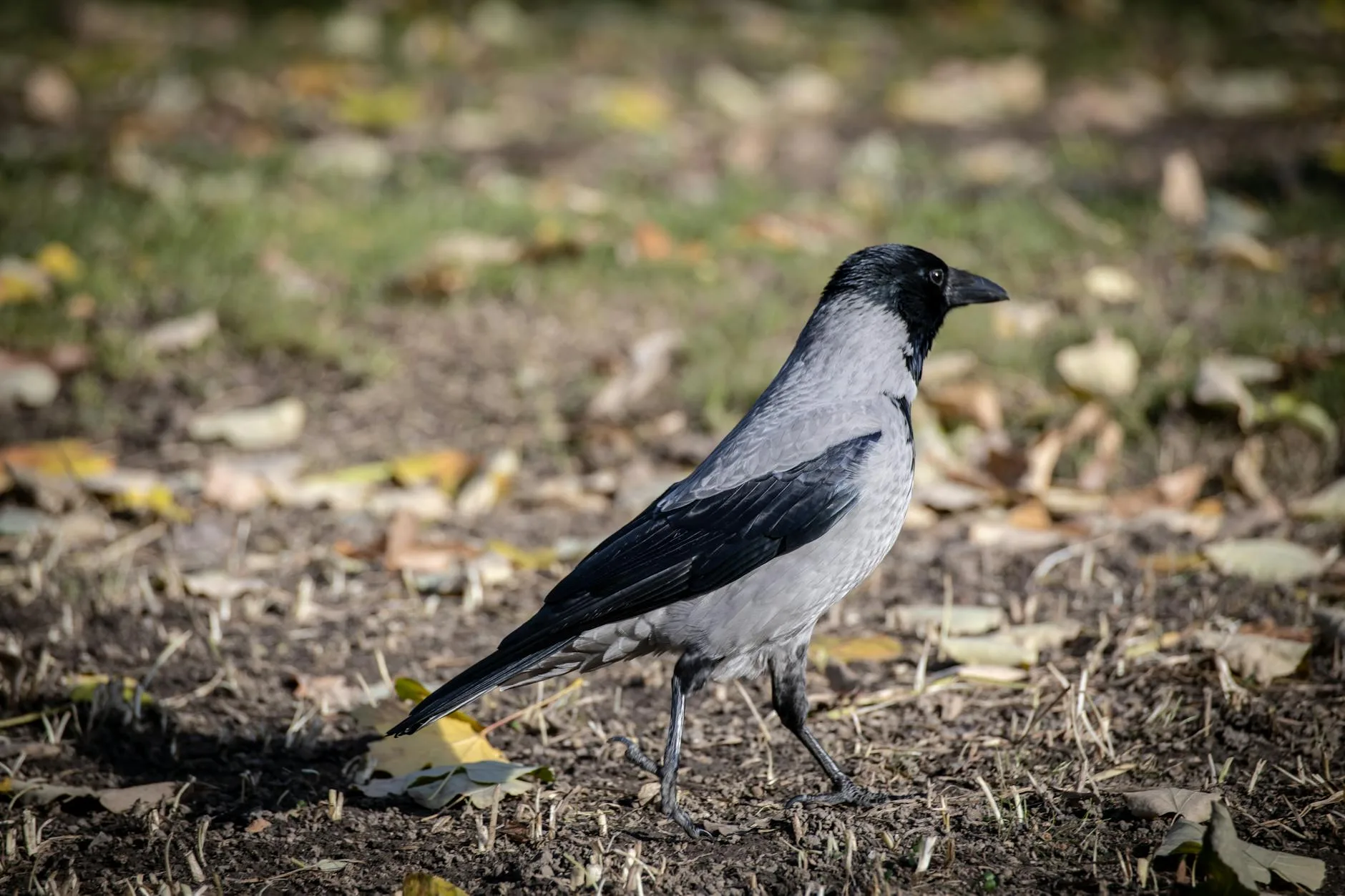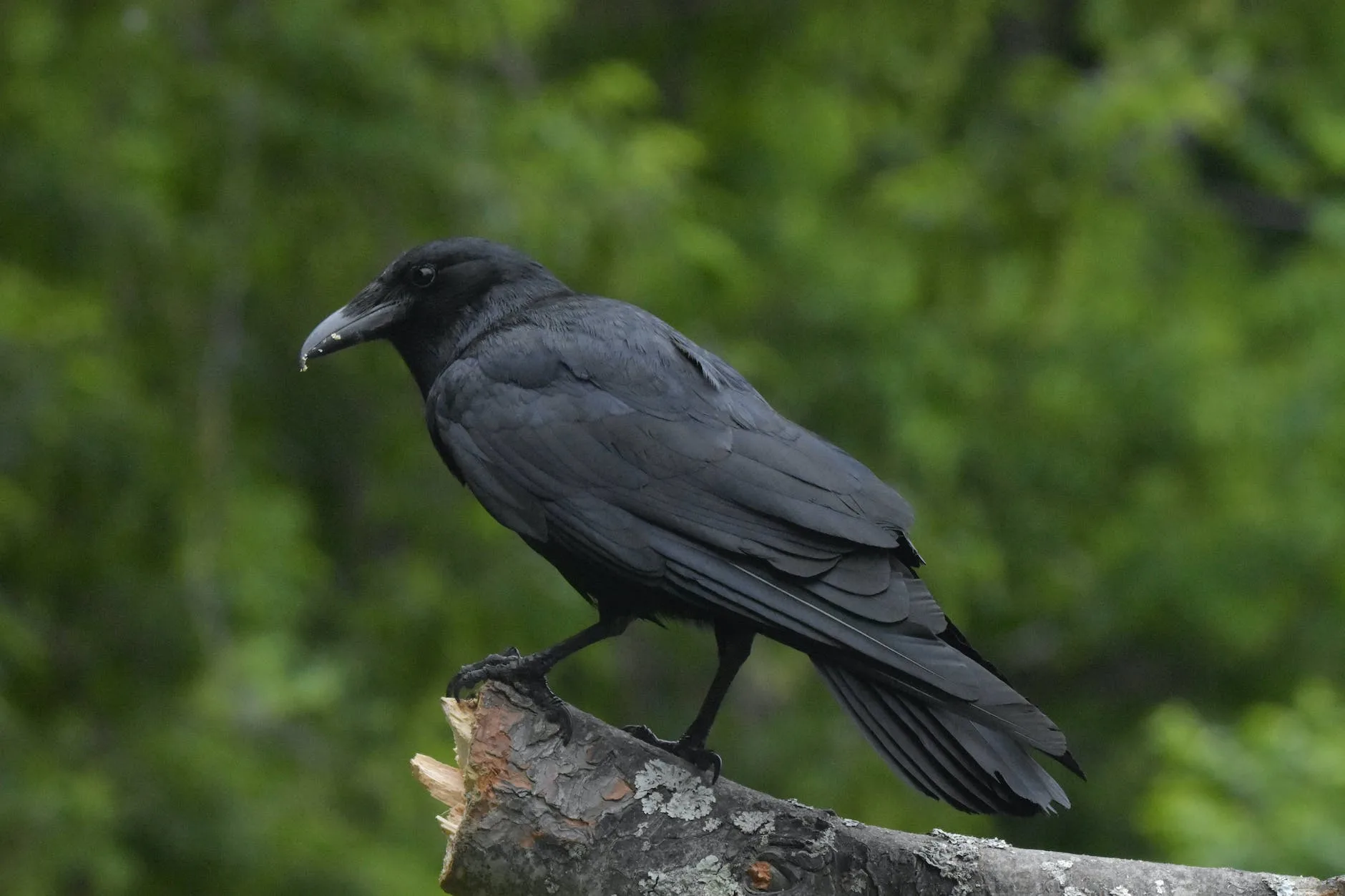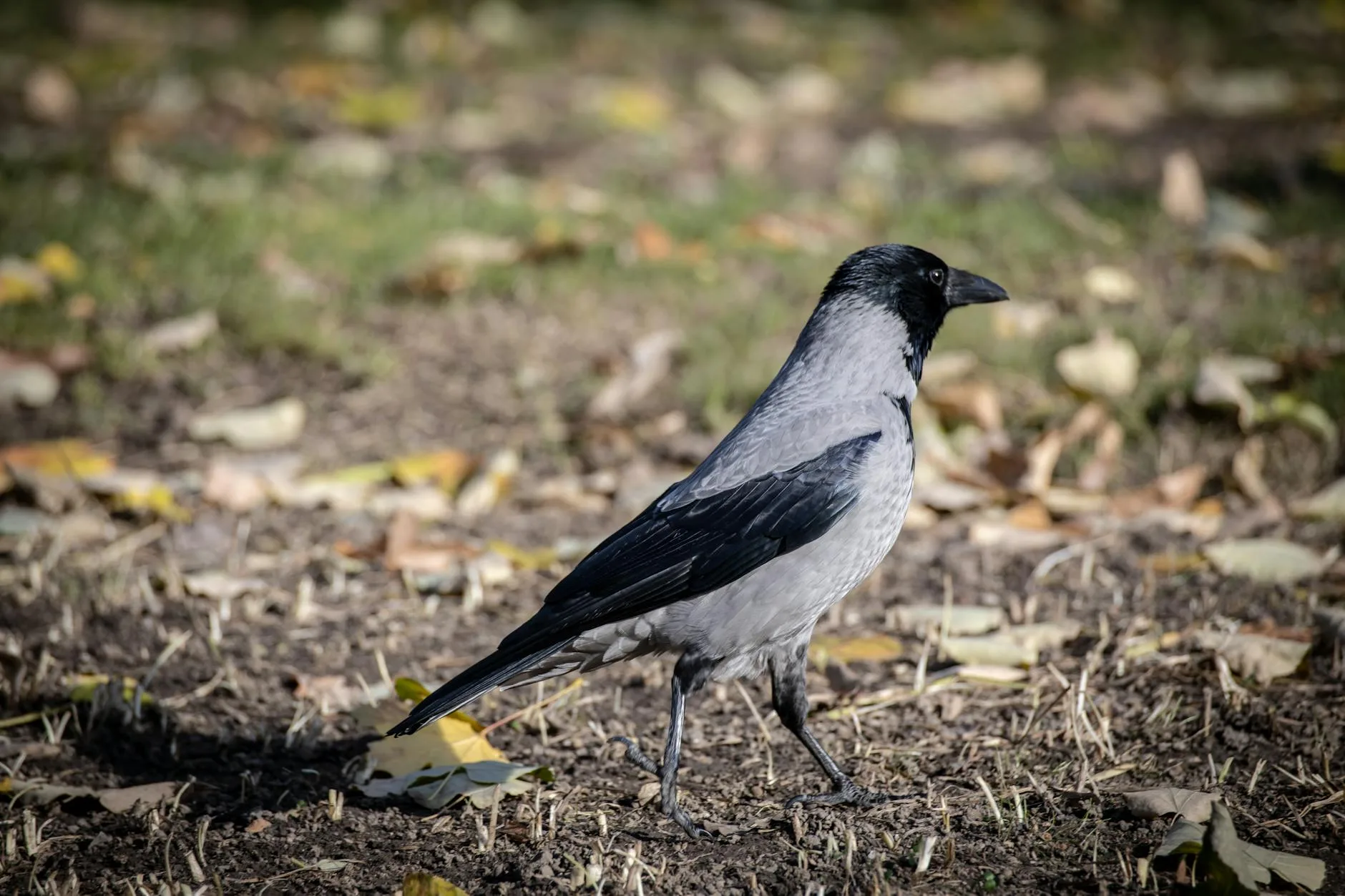Unlocking the Wonders of the Bismarck Crow: Corvus Insularis in Papua New Guinea
December 30, 2023 | by BlackCrow.com

Introducing the Bismarck Crow
The Bismarck Crow, scientifically known as Corvus insularis, is a fascinating bird species found in the Bismarck Archipelago of Papua New Guinea. Let’s take a closer look at this unique crow and its characteristics.
Overview of the Bismarck Crow
The Bismarck Crow is a medium-sized bird, measuring approximately 40 centimeters (15.7 inches) in length. It possesses a distinct black plumage, which is common among crow species. However, what sets the Bismarck Crow apart is its striking white eyes, giving it an intriguing appearance.
This crow species is known for its intelligence and adaptability. It exhibits complex social behaviors and has remarkable blackcrow problem-solving skills, making it a fascinating bird to study.
Geographic Distribution and Habitat
The Bismarck Crow is endemic to the Bismarck Archipelago, a group of islands located in the western Pacific Ocean, northeast of mainland Papua New Guinea. This archipelago includes islands like New Britain, New Ireland, and the Admiralty Islands.
Within this region, the Bismarck Crow inhabits a variety of habitats, including lowland rainforests, secondary forests, and coconut plantations. It has adapted well to the diverse environments found within the archipelago.
The Bismarck Crow plays an important ecological role in its habitat, and its presence contributes to the overall biodiversity of the region. This crow species also holds cultural significance for the local communities, who have developed a deep connection with this unique bird.
To learn more about other crow species, such as the Pied Crow or the Little Crow, visit our articles on corvus albus – pied crow (central African coasts to southern Africa) and corvus bennetti – little crow (Australia), respectively.
In the next section, we will explore the unique features and behaviors of the Bismarck Crow.
Unique Features of the Bismarck Crow
The Bismarck Crow (Corvus insularis) is a fascinating bird species found in the Bismarck Archipelago of Papua New Guinea. This unique crow possesses distinctive physical characteristics and displays intriguing behaviors and social structures.
Physical Appearance
The Bismarck Crow is a medium-sized bird with a length of approximately 40 centimeters (15.7 inches) and a weight of around 400 grams (14 ounces). It has glossy black feathers that cover its entire body, including its wings and tail. The plumage of the Bismarck Crow is sleek and shiny, adding to its striking appearance.
One notable feature of this crow is its robust bill, which is slightly curved and well-adapted for various feeding behaviors. Additionally, the Bismarck Crow has strong legs and feet, enabling it to move swiftly and navigate its habitat with ease.
Behaviors and Social Structure
The Bismarck Crow exhibits fascinating behaviors and has a complex social structure. These crows are highly intelligent and known for their blackcrow problem-solving abilities. They have been observed using tools, such as sticks or twigs, to extract food from crevices or to access hard-to-reach food sources.
Bismarck Crows are also known to be highly social birds. They form cohesive family groups consisting of a breeding pair and their offspring. These family groups engage in cooperative activities, such as defending their territory, foraging together, and sharing information about food sources and potential threats.
In addition to their family units, Bismarck Crows may also form larger flocks, especially during the non-breeding season. These flocks provide opportunities for social interactions and allow individuals to learn from one another.
Understanding the unique physical features and behaviors of the Bismarck Crow is essential for appreciating the beauty and complexity of this species. The next section will delve into the conservation status and threats faced by these remarkable birds.
Conservation Status and Threats
Endangered Status
The Bismarck Crow (Corvus insularis) is currently classified as an endangered species. This classification is due to the declining population and the limited range of this bird species. The Bismarck Crow is endemic to the Bismarck Archipelago in Papua New Guinea, making it highly vulnerable to habitat loss and other threats.
Threats to the Bismarck Crow
Several factors contribute to the threats faced by the Bismarck Crow population. The primary threat is habitat destruction caused by deforestation and land conversion for agriculture. The clearing of forests reduces the availability of suitable habitats for the Bismarck Crow, leading to a decline in their population.
Additionally, logging activities, both legal and illegal, further degrade the forests and disrupt the natural ecosystem. These activities can result in the fragmentation of the Bismarck Crow’s habitat, making it challenging for the birds to find suitable nesting and foraging sites.
Another significant threat to the Bismarck Crow is the introduction of invasive species, particularly rats. These predators prey on the eggs and nestlings of the Bismarck Crow, reducing their reproductive success and further impacting their population.
Climate change is also a concern for the Bismarck Crow. Rising temperatures, altered rainfall patterns, and extreme weather events can disrupt the black crow breeding and foraging behaviors, affecting their survival and overall population health.
Efforts are being made to address these threats and protect the Bismarck Crow population. Conservation measures, such as the establishment of protected areas and the implementation of sustainable forestry practices, aim to preserve the bird’s habitat and ensure its long-term survival. Research and monitoring initiatives are also underway to gather more data on the Bismarck Crow’s population size, behavior, and specific habitat requirements.
By raising awareness about the conservation status of the Bismarck Crow and implementing targeted conservation actions, we can contribute to the protection and preservation of this unique bird species.
The Importance of the Bismarck Crow
The Bismarck Crow, scientifically known as Corvus insularis, plays a significant role both ecologically and culturally in the Bismarck Archipelago of Papua New Guinea.
Ecological Role
The Bismarck Crow has an essential ecological role in its native habitat. As an omnivorous bird, it feeds on a variety of foods, including fruits, seeds, insects, and small vertebrates. By consuming a diverse range of organisms, the Bismarck Crow helps regulate populations of insects and small animals, contributing to the overall balance of the ecosystem. Additionally, as scavengers, they assist in the decomposition process by feeding on carrion, playing a crucial role in nutrient recycling.
Cultural Significance
The Bismarck Crow holds cultural significance to the local communities in the Bismarck Archipelago. Throughout history, the bird has been featured in traditional stories, songs, and artwork, symbolizing various aspects of local culture and beliefs. The Bismarck Crow’s distinctive appearance and behaviors have made it a subject of fascination and inspiration for indigenous art forms, reflecting its importance in the cultural heritage of the region.
The cultural significance of the Bismarck Crow is also evident in the rituals and ceremonies of the local communities. The bird’s presence and behavior are observed and interpreted as omens or indicators of significant events or changes in the natural world. Its unique vocalizations and behaviors have become part of the cultural fabric, woven into narratives and folklore.
Overall, the Bismarck Crow holds ecological importance by contributing to the balance of the ecosystem, and it holds cultural significance as a symbol and inspiration in the local communities. Protecting the Bismarck Crow’s habitat and ensuring its survival is not only essential for the well-being of the black crow ecosystem but also for preserving the cultural heritage of the region. Efforts in conservation and research are crucial to safeguarding this remarkable species for future generations.
Efforts in Protecting the Bismarck Crow
Recognizing the significance of the Bismarck Crow and the need for its conservation, various efforts have been undertaken to protect this unique bird species. Conservation measures and research initiatives play a crucial role in ensuring the survival and well-being of the Bismarck Crow population.
Conservation Measures
Conservation organizations, local communities, and government agencies have implemented several measures to safeguard the Bismarck Crow and its habitat. These measures include:
- Protected Areas: Establishing protected areas, such as national parks and wildlife sanctuaries, where the Bismarck Crow can thrive undisturbed. These protected areas help to preserve the bird’s natural habitat and provide a safe haven for breeding and nesting.
- Habitat Restoration: Conducting habitat restoration projects to enhance the quality and availability of suitable nesting sites and food sources for the Bismarck Crow. This may involve replanting native vegetation, controlling invasive species, and managing human activities that could impact the bird’s habitat.
- Community Involvement: Encouraging local communities to actively participate in conservation efforts by raising awareness about the importance of the Bismarck Crow and promoting sustainable practices that minimize negative impacts on the bird and its habitat.
- Legislation and Enforcement: Enacting and enforcing laws and regulations that protect the Bismarck Crow and its habitat. This includes implementing measures to prevent illegal hunting, logging, and habitat destruction.
Research and Monitoring Initiatives
To better understand the Bismarck Crow and its ecological needs, ongoing research and monitoring initiatives have been undertaken. These initiatives aim to gather valuable data on the bird’s population size, behavior, breeding patterns, and habitat requirements. Some key research and monitoring activities include:
- Population Surveys: Conducting regular surveys to assess the population size and distribution of the Bismarck Crow. This information helps to monitor changes in population trends and identify potential threats.
- Nesting and Breeding Studies: Studying the nesting behavior and breeding success of the Bismarck Crow to gain insights into its reproductive biology. This knowledge can guide conservation strategies and identify factors that may impact the bird’s breeding success.
- Habitat Assessment: Assessing the quality of the Bismarck Crow’s habitat, including factors such as food availability, nesting sites, and vegetation composition. This information guides habitat management and restoration efforts.
- Tracking and Monitoring: Using modern tracking technologies, such as GPS tags and satellite telemetry, to monitor the movement and behavior of individual Bismarck Crows. This data helps researchers understand the bird’s habitat use, migration patterns, and potential threats.
By implementing conservation measures and conducting ongoing research and monitoring, dedicated individuals and organizations strive to protect the Bismarck Crow and ensure its long-term survival. These efforts are crucial for black crow preserving the ecological balance and cultural significance associated with this remarkable bird species.
RELATED POSTS
View all


